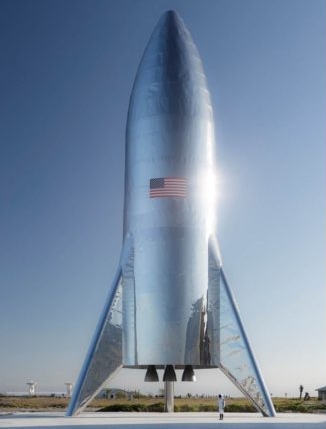Astra scrubs first orbital launch
Capitalism in space: Astra, competing for DARPA launch challenge, is about to attempt the first orbital launch of its Rocket 3.0. Live stream of launch embedded below.
The rocket is carrying three cubesats. DARPA’s goal is for the development of a rocket system that can very quickly go to launch. In this case Astra only found out what its payloads were about a month before launch, and had to proceed to launch in mere weeks. They will win $2 million. They can get another $10 million if they launch again by the end of March.
The launch went into an unplanned hold 53 seconds before launch. Their launch window extends to 6:30 pm (Eastern), so there is still a chance they can lift-off today.
They have now scrubbed the launch. No word yet on when they will reschedule. Their failure to launch today however means they will not win the $2 million launch challenge. It was unclear from the broadcast if they would win the $10 million if they manage two launches by the end of March. (According to this website, that award is also lost.) It was even unclear whether they would even try to launch their three cubesat payloads.
In fact, as I watched the post-scrub interviews, I began to get suspicious about this whole event. Astra has been very secretive about its work. They have never successfully launched before. Could this merely have been a demonstration that they could get a rocket set up on an empty concrete pad, with payload, in only a matter of weeks, knowing that the launch was simply impossible? I have no idea, but I do wonder.
My suspicions do not mean Astra won’t launch eventually. I just now have doubts they ever were ready today.
Capitalism in space: Astra, competing for DARPA launch challenge, is about to attempt the first orbital launch of its Rocket 3.0. Live stream of launch embedded below.
The rocket is carrying three cubesats. DARPA’s goal is for the development of a rocket system that can very quickly go to launch. In this case Astra only found out what its payloads were about a month before launch, and had to proceed to launch in mere weeks. They will win $2 million. They can get another $10 million if they launch again by the end of March.
The launch went into an unplanned hold 53 seconds before launch. Their launch window extends to 6:30 pm (Eastern), so there is still a chance they can lift-off today.
They have now scrubbed the launch. No word yet on when they will reschedule. Their failure to launch today however means they will not win the $2 million launch challenge. It was unclear from the broadcast if they would win the $10 million if they manage two launches by the end of March. (According to this website, that award is also lost.) It was even unclear whether they would even try to launch their three cubesat payloads.
In fact, as I watched the post-scrub interviews, I began to get suspicious about this whole event. Astra has been very secretive about its work. They have never successfully launched before. Could this merely have been a demonstration that they could get a rocket set up on an empty concrete pad, with payload, in only a matter of weeks, knowing that the launch was simply impossible? I have no idea, but I do wonder.
My suspicions do not mean Astra won’t launch eventually. I just now have doubts they ever were ready today.

